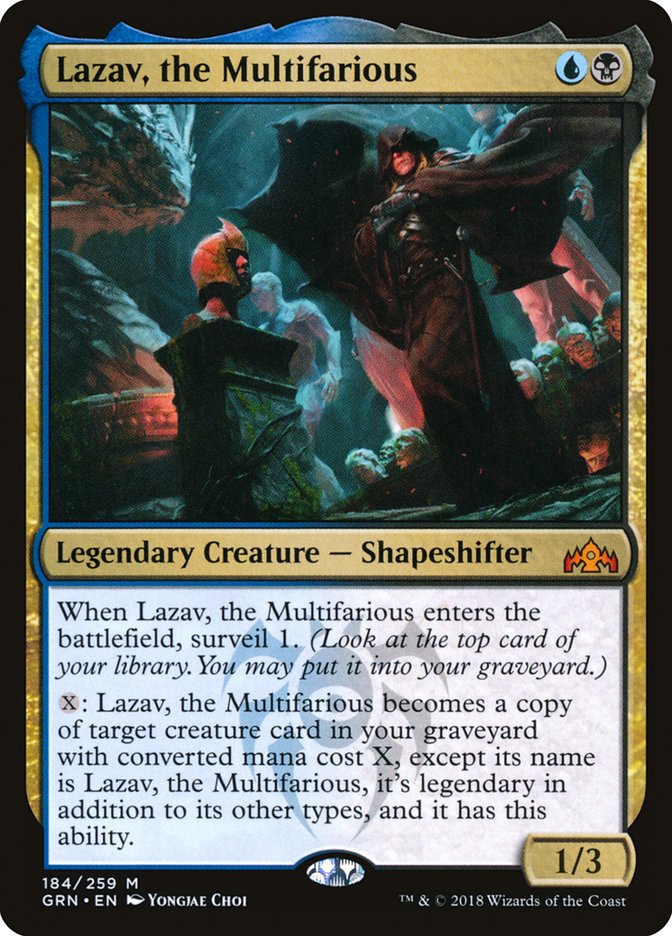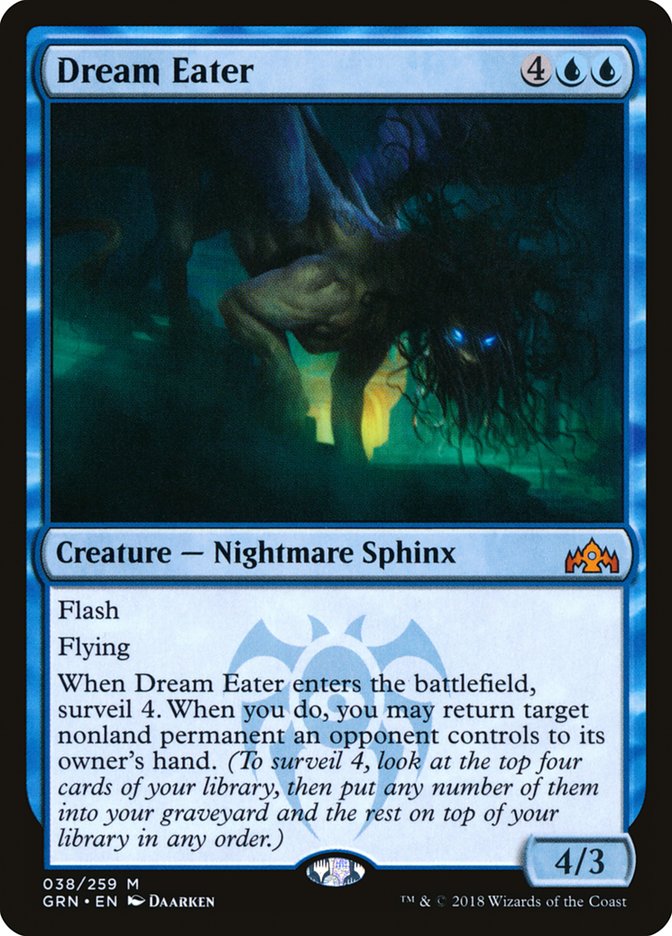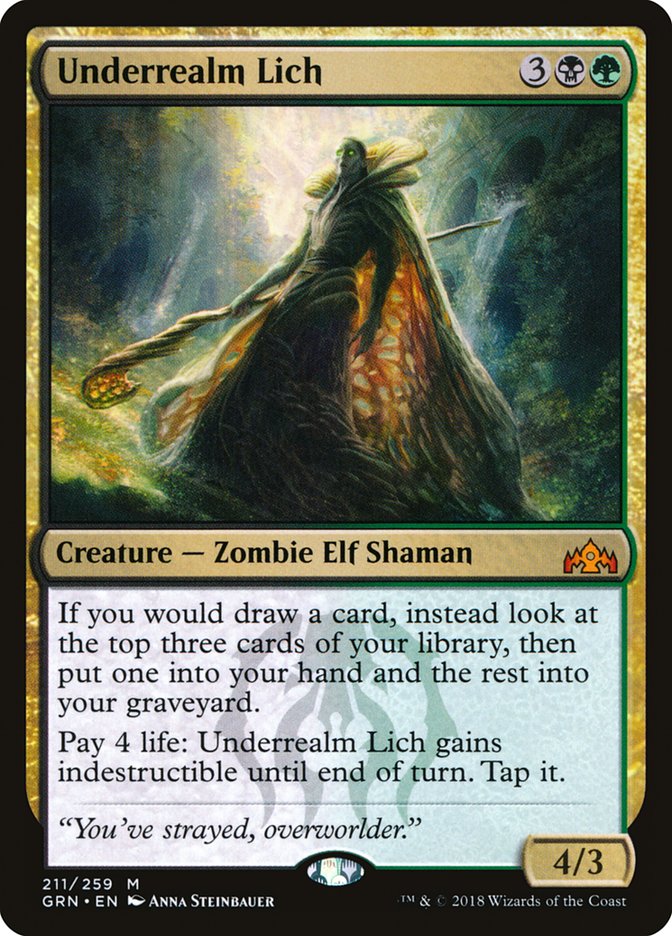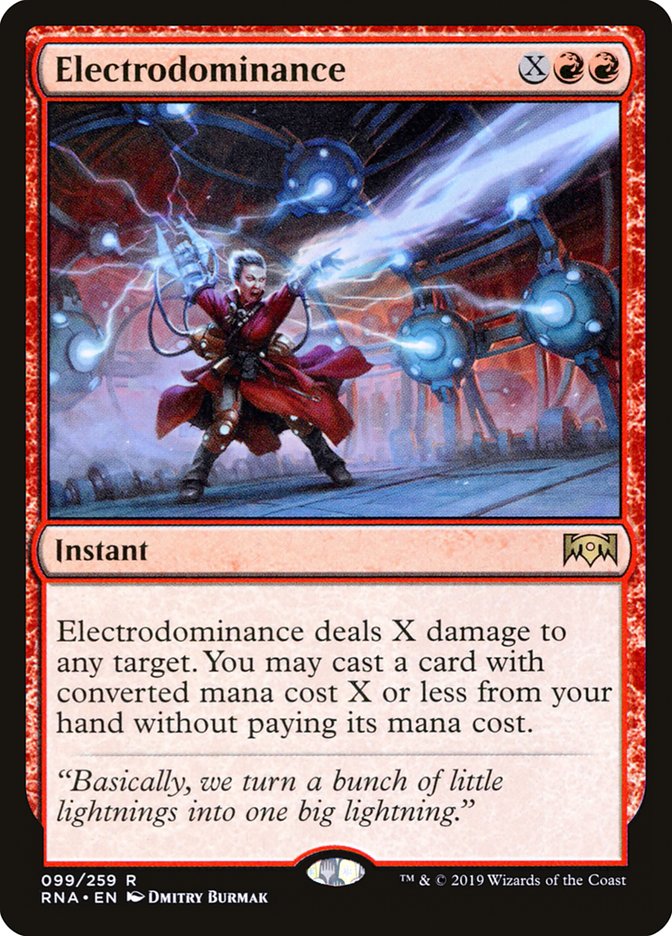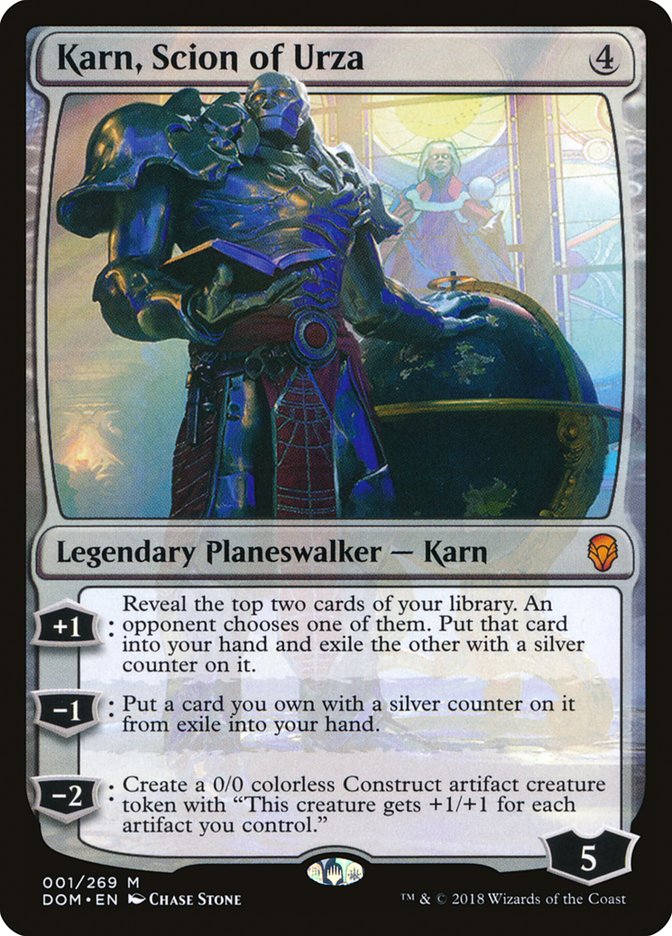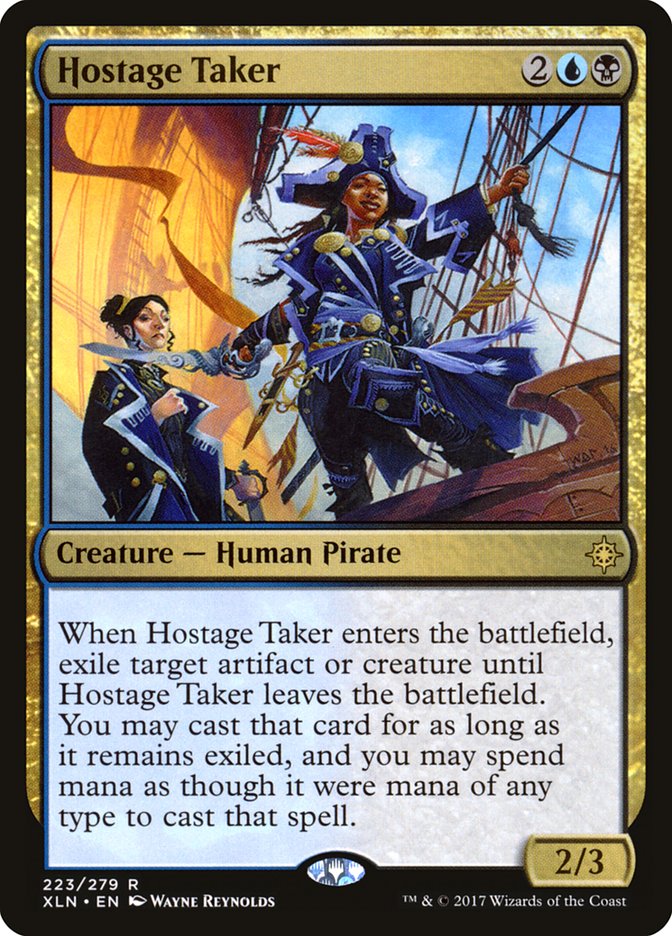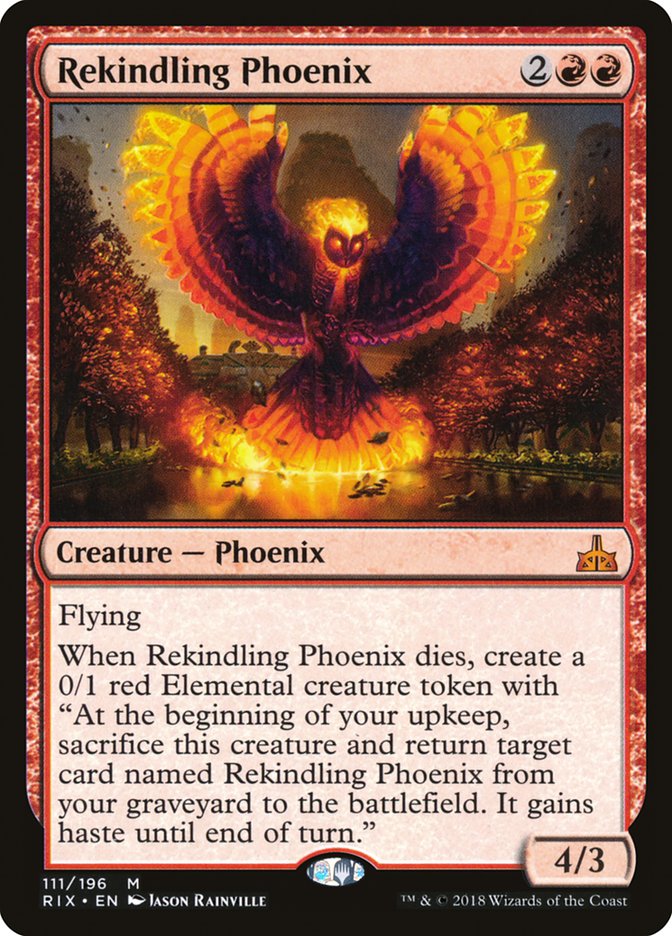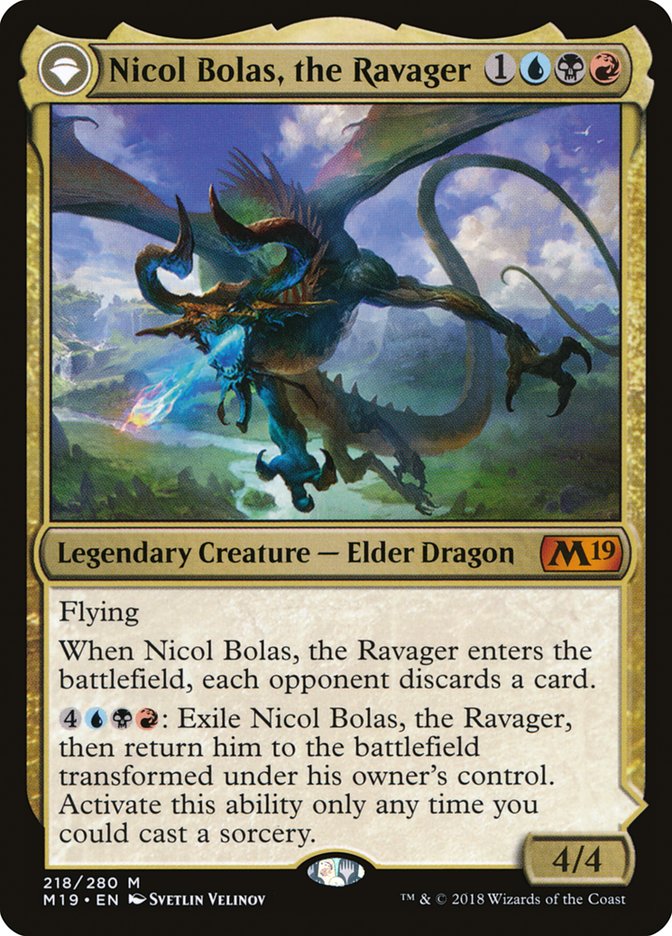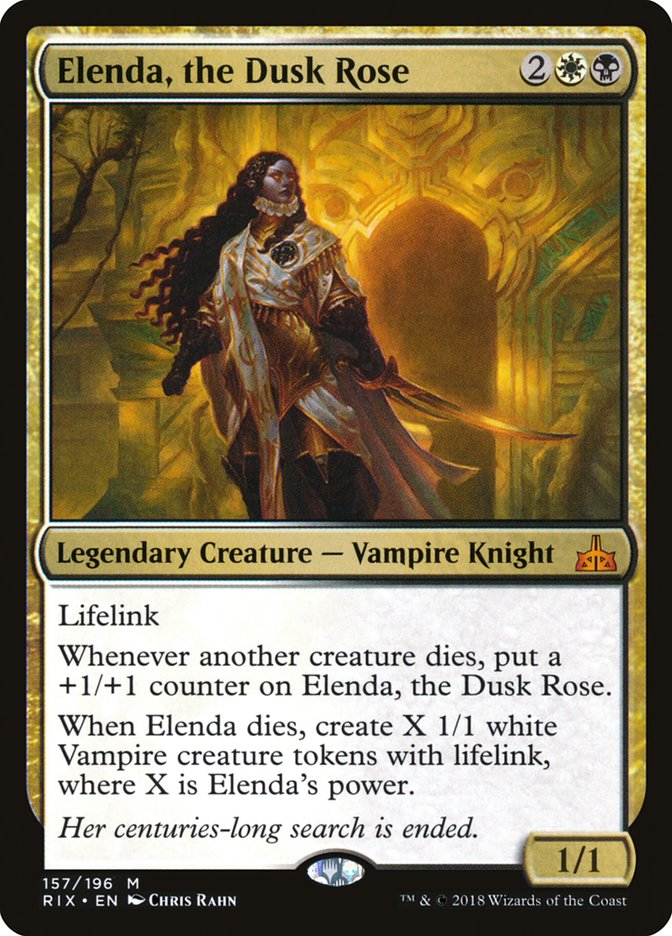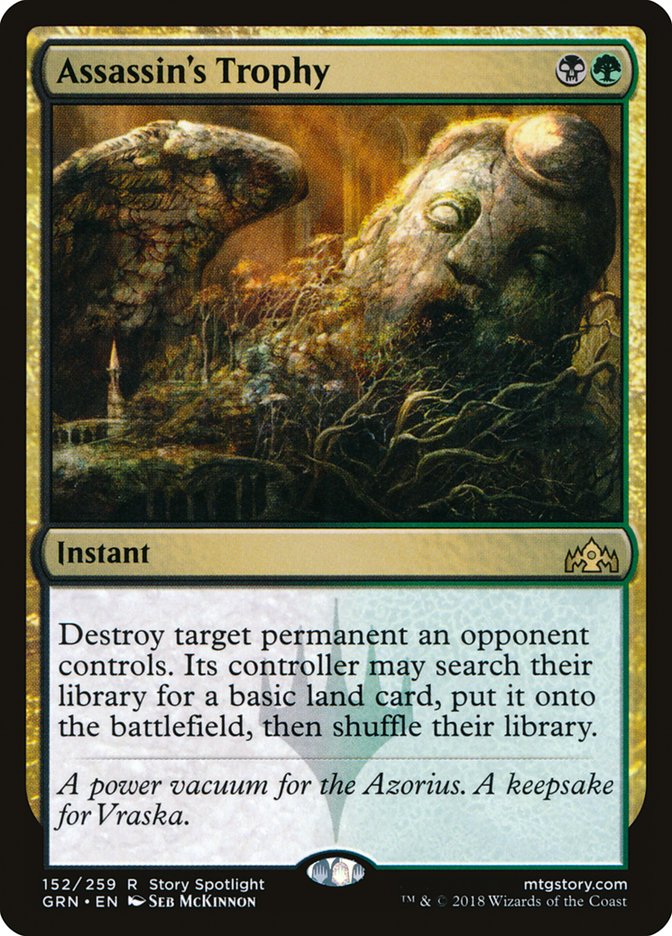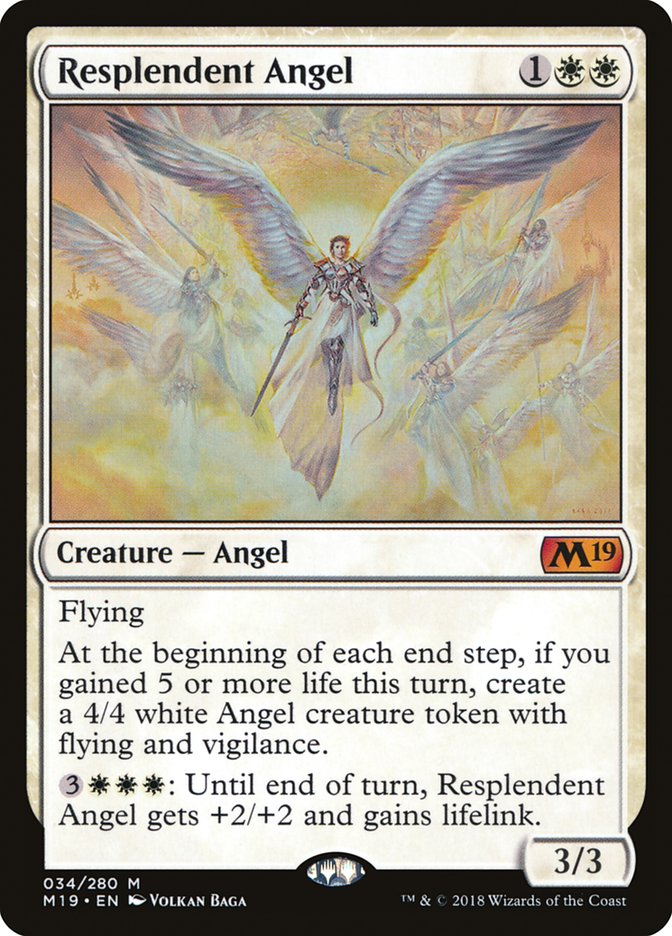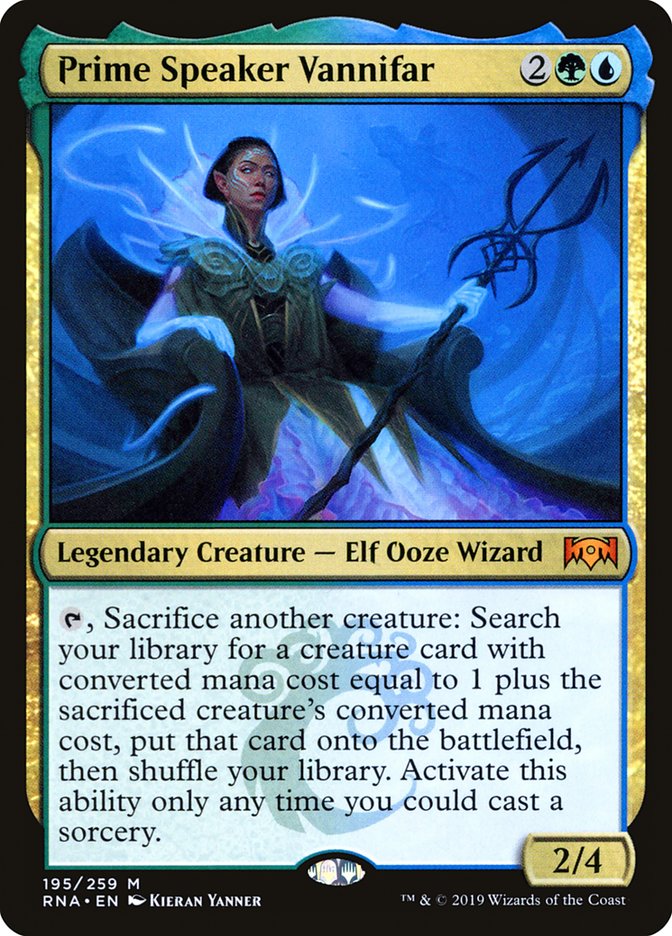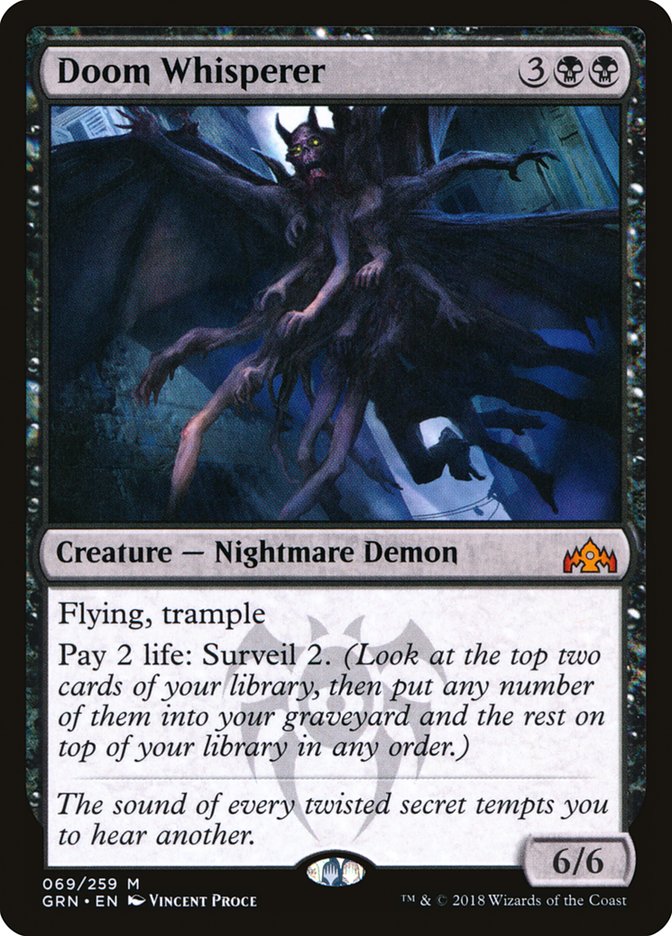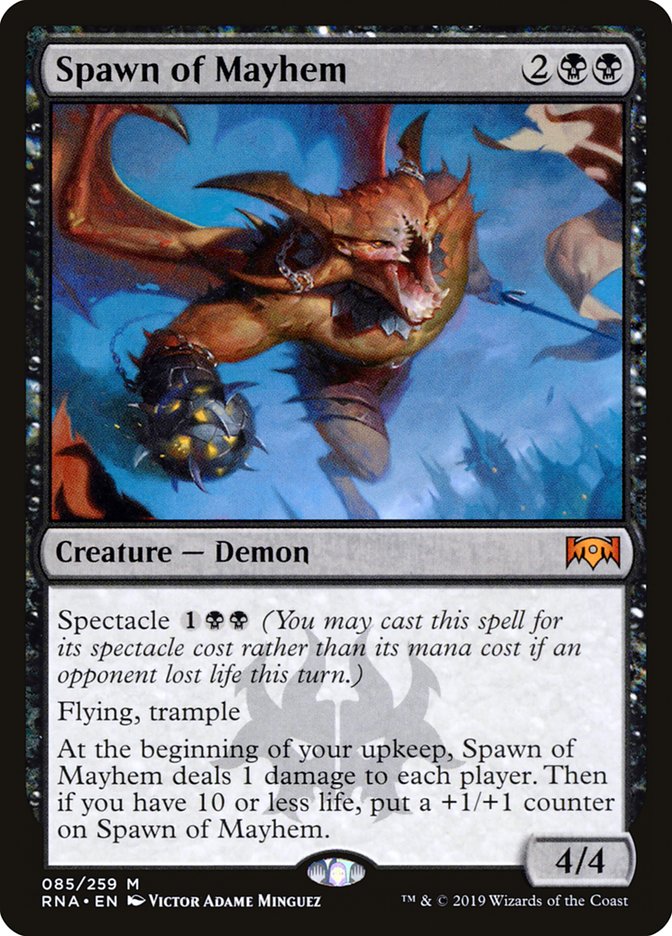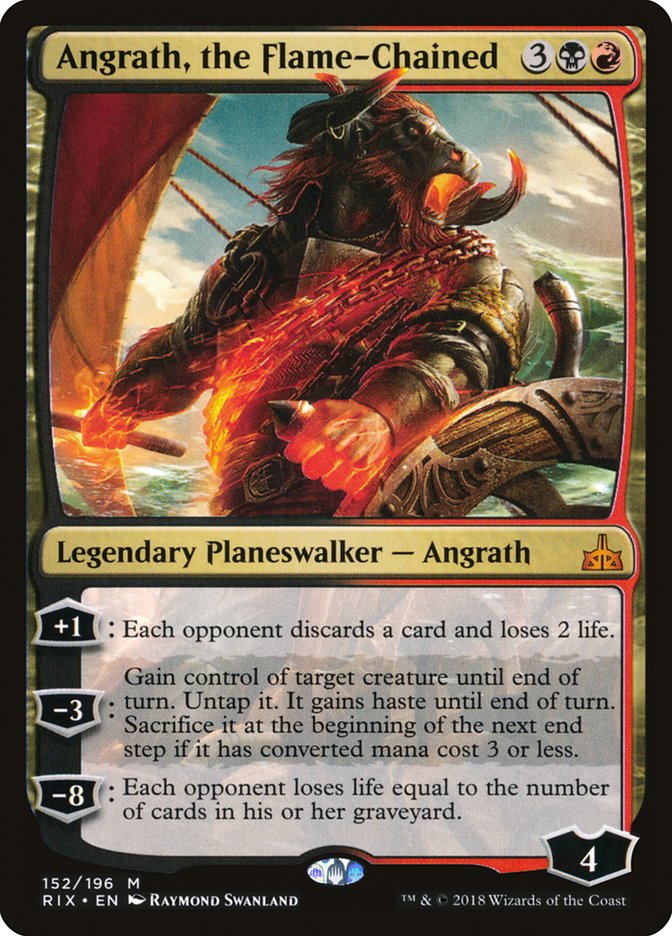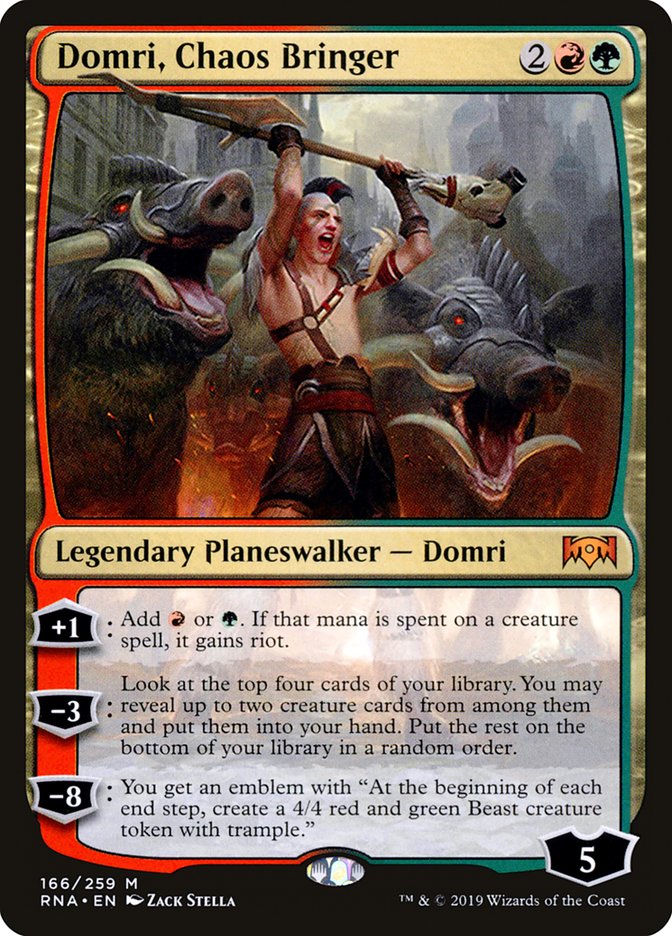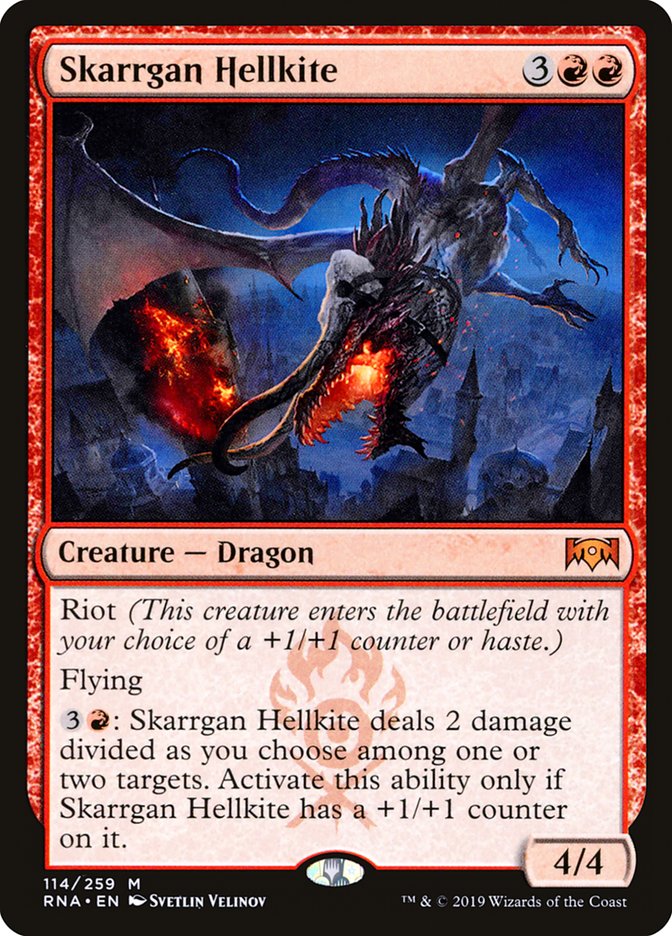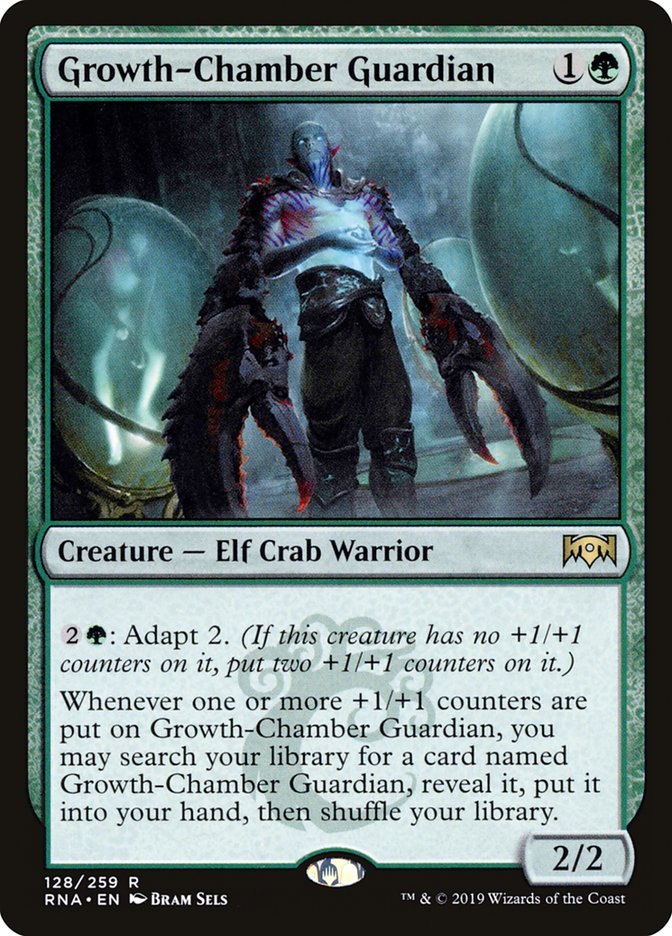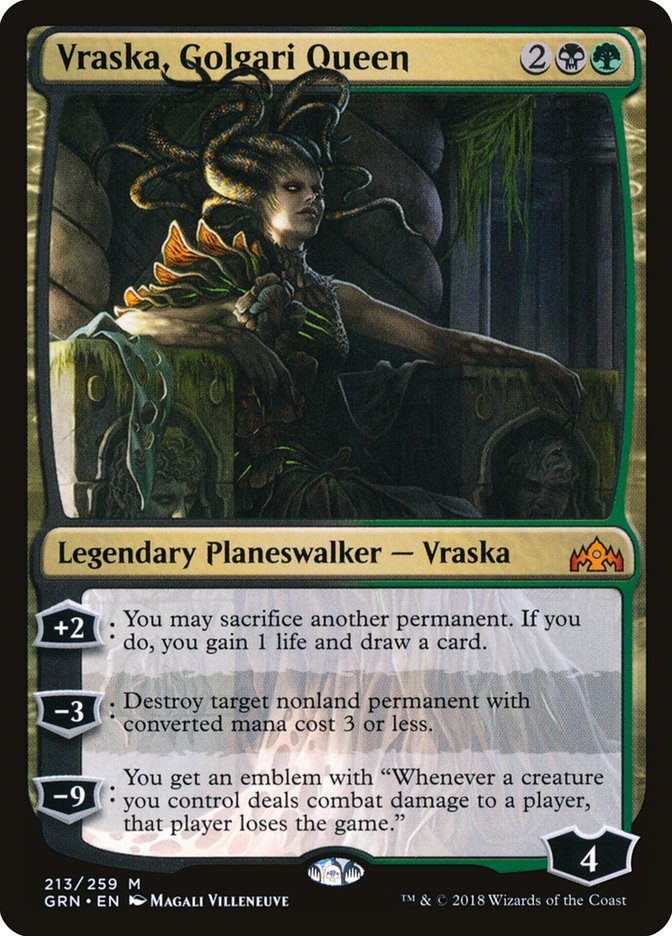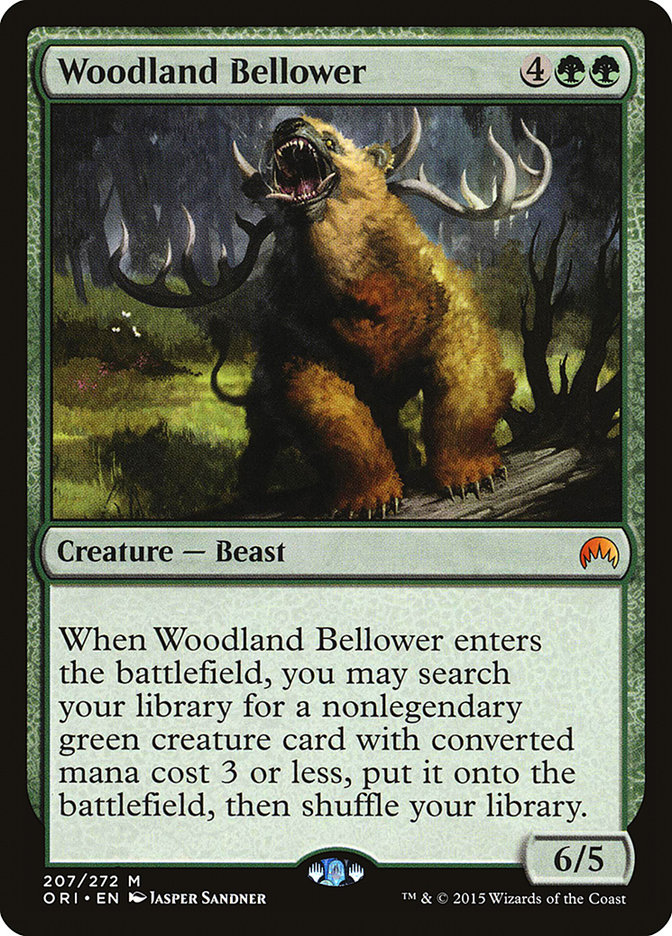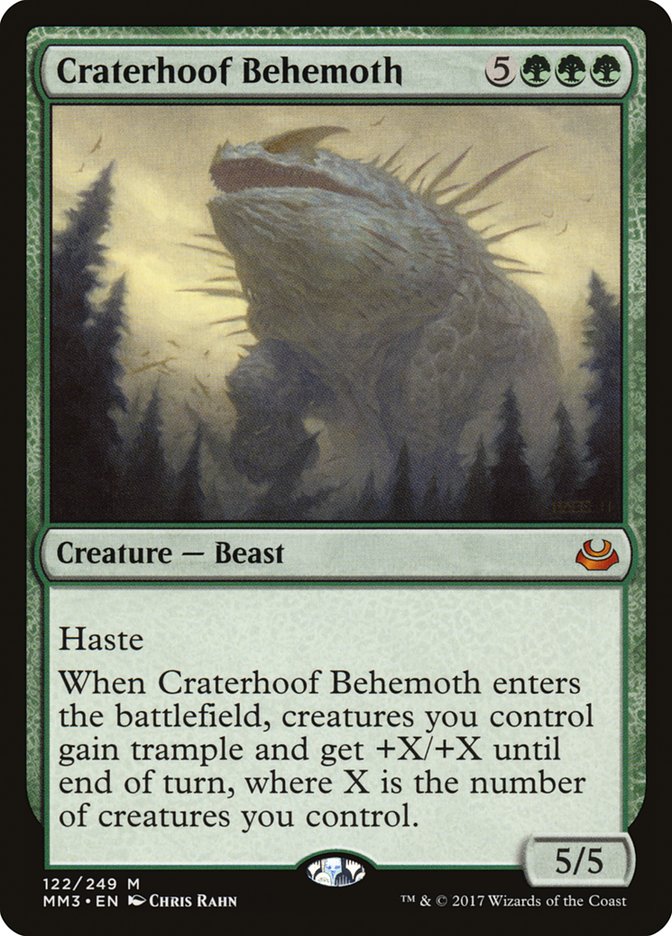When I wrote
my article last week
, SCG Indianapolis was finishing up and the new Standard format was just
starting to take shape. At that point, I knew that Hydroid Krasis was
probably pretty good and that Judith, the Scourge Diva had stayed home sick
for some reason. Beyond that…I wasn’t quite sure. Were any of the decks
that didn’t make Top 8 in Indianapolis actually good? Was Sultai Midrange
as good as it seemed? How would the metagames on Magic Arena and Magic
Online react to the innovations that were deployed on the SCG Tour?
While metagames are always evolving, there’s something to be said for
paying especially close attention to what things look like once we’ve
passed beyond the first wave of results and the format’s brightest minds
have had their chance to react. This is when the true powerhouse decks tend
to reveal themselves and we can finally get a look at the archetypes and
cards that are going to be good for the next couple of months.
This isn’t to say that great decks can’t develop later – Izzet Drakes was
several weeks late to the party during Guilds of Ravnica Standard,
for example – but if you’re really on top of things as the metagame first
settles out, you’ll be able to put yourself in the best position to squeeze
the most value out of your Standard collection.
Take Guilds of Ravnica. Right now, previously hyped mythic rares
like Lazav, the Multifarious, Dream Eater, and Underrealm Lich are all
readily available for $3 or less. But during the first couple weeks of Guilds of Ravnica Standard, they were all still selling in the
$6-$10 range even though it was already starting to look like all three
cards were going to bust.
If you were savvy enough, you could have gotten out of those cards (either
via trade or buylist) as they tanked into oblivion. Then, if you were both
savvy and lucky, you could have used that money to buy into
Arclight Phoenix.
I talk a lot about buying low and selling high, but this is the one time of
year when it’s right to think about selling low and buying high. Even
though we all know how good Hydroid Krasis is, and we’re all pretty sure
that Electrodominance isn’t going to end up being the slam-dunk staple that
some of us thought it might be; it takes time for some cards to finish
climbing and others to finish falling. There are still people who believe
in Electrodominance right now – and they may well be right! – but I’d
rather sell my copies now when they’re worth $5 than wait until it drops
into bulk rare range.
That’s why it’s so important to pay attention to the decks that are already
proving themselves in the new metagame. Even though things are going to
keep changing, I’d rather take my chances with the cards that look good now. Cards that are good in decks like…
Sultai Midrange
Creatures (26)
- 4 Llanowar Elves
- 2 Carnage Tyrant
- 4 Wildgrowth Walker
- 4 Merfolk Branchwalker
- 1 Seekers' Squire
- 4 Jadelight Ranger
- 2 Ravenous Chupacabra
- 2 Midnight Reaper
- 3 Hydroid Krasis
Planeswalkers (3)
Lands (24)
Spells (7)

Sultai Midrange is the deck to beat in Standard right now. Not only did it
win the SCG Indianapolis last weekend, but it’s currently the most popular
Standard deck on MTGO according to the MTG Goldfish numbers. Furthermore,
Sultai Midrange has a pedigree – the base of the deck is essentially the
old Golgari Midrange deck from last season, but with a blue splash for
Hydroid Krasis and a couple of sideboard counterspells.
Key Financial Cards:
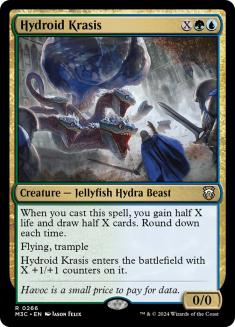
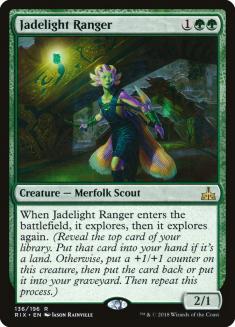
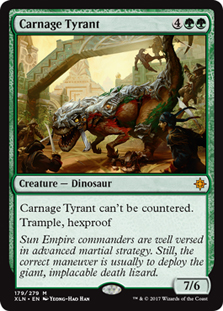
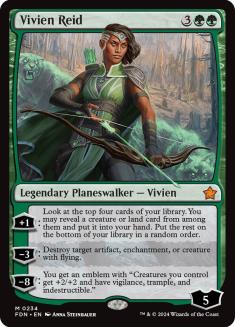

Even though Sultai Midrange is both good and popular right now, I feel like
there’s some evolution left to come here. Perhaps most importantly, I’m not
sure that Carnage Tyrant is all that good right now – the shift from Jeskai
Control to Esper Control has left that card in a bit of an awkward spot,
and I wouldn’t be shocked if something like Zegana, Utopian Speaker ends up
taking over that slot at some point. Financially, this is a pretty big
deal: Carnage Tyrant retails for $35, and it doesn’t see play in too many
other decks right now. I’m probably not selling my personal 2-3 copies of
Carnage Tyrant if I’m a Sultai Midrange player, but I’d be very wary about
holding onto any extras at the moment.
On the other side of the coin, Vivien Reid continues to become a bigger and
bigger part of the metagame. Along with Jadelight Ranger, she’s one of the
holdovers from the old Golgari deck that’s absolutely going to remain part
of the core plan going forward. I assume that we’re going to see price
bumps for both cards at some point this late winter or early spring; after
all, we’re not opening any more packs of Core Set 2019 or Rivals of Ixalan. At the very least, both green staples feel like
incredibly safe holds to me right now.
Lastly, it sure does seem like Sultai Midrange is the best Hydroid Krasis
deck in the format right now. While I still feel like the Jellyfish Hydra
Beast is being a tad overrated at the moment, it has pretty clearly become
the signature card for Ravnica Allegiance, the current metagame,
and this deck in particular. That sort of spotlight matters a lot, and it’s
a big part of why Hydroid Krasis is selling for $38 right now. I feel
pretty confident in believing that this card is going to remain one of the
2-3 most expensive cards in the format going forward.
Esper Control
Creatures (1)
Planeswalkers (4)
Lands (27)
Spells (28)

Esper Control is pretty clearly the best and most popular way to build
control right now. I was kind of hoping that Jeskai would survive, or that
Nicol Bolas, the Ravager would find its way to claw back into the metagame
somehow, but neither of those things are on my radar right now. If you want
to play control, it’s going to look something like this.
Key Financial Cards:
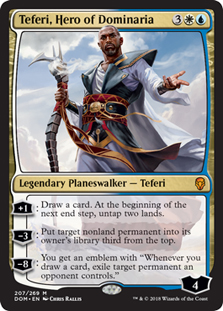
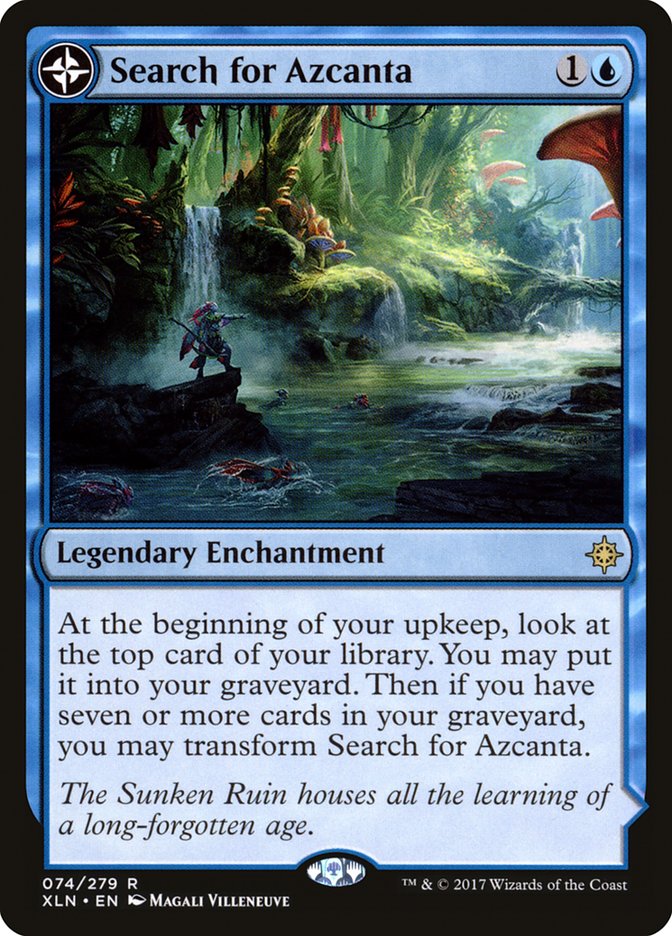
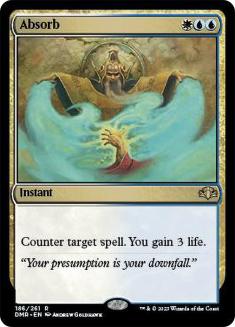
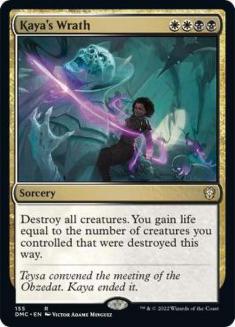

I don’t really have much to say about Teferi at this point. The powerful
planeswalker is far and away the most expensive card in the format, and
that’s not going to change this season. Teferi is the most important card
in Esper Control and one of the most important cards in the format, period.
If you want these, you’re going to have to pony up for them. Otherwise,
find a different deck.
Financially, everything else about Esper Control keys off of Teferi. The
fact that you need four copies of a $60 card in order to play this brew is
a heck of a bottleneck; either you already have your Teferis, or you must
shell out $240 in cash or trade before you can even walk up to the table.
This is the biggest reason why Kaya’s Wrath is just $5 and Absorb is just
$3 despite both cards being powerful rares that totally lived up to the
early hype. I strongly suspect that both cards are going to continue to do
a lot of work going forward, but their upsides are limited thanks to
Teferi’s price tag. I’m fine holding these cards from here on out, but
they’re not terribly enticing specs for me because I don’t see how they
cross over into any other decks.
Then there’s Search for Azcanta, which has been fairly stable for about a
year now. Seriously: ever since last February or so, Search for Azcanta has
never been cheaper than $17 or higher than $30. I feel like Search is going
to remain in this range for the foreseeable future, mostly due to the
amount of play that it sees in Modern as well, though it’s got some room to
grow if another Search for Azcanta deck (Bant Nexus maybe?) ends up taking
off.
Before we move on, it’s worth talking about a couple of other potential
additions here. While Nick Cowden’s build of Esper Control doesn’t run
Karn, Scion of Urza,
Raja Sulaiman’s winning build
from the Star City Games Classic last weekend in Indianapolis ran two
copies of the formerly-hyped planeswalker. At just $23, Karn has been
kicking around at the bottom of its market for a while now, but it has a
chance to reappear in decks like Esper Control and Esper Midrange as the
metagame continues to develop. The fact that it sees play in formats as far
back as Vintage gives it a pretty decent price floor, so it’s a pretty
solid low-risk trade target for those who are interested in such things.
The other card I want to bring up is Hostage Taker. Not only can Hostage
Taker slot right into Esper Control, but it’s a potential inclusion in
Sultai Midrange as well. If this card does end up finding a home in the two
most popular Standard decks, expect it to end up jumping from its current
$4 retail price up toward the $7-$10 range. It’s no guarantee that Hostage
Taker will end up being a huge part of the metagame, but if you’re a big
believer in Hydroid Krasis then you should probably be a believer in
Hostage Taker as well. Taking your opponent’s Krasis off the table and
re-casting it yourself has to be one of the best things you can be doing in
the mid-to-late game, right? If Standard is going to become a
Krasis-palooza, expect to see this Pirate running around everywhere as
well.
Mono-Red Aggro
Nothing has really changed with Mono-Red Aggro since the Star City Games
Open last weekend. Caleb Scherer’s tenth-place build still seems like the
correct choice for the current metagame, and I strongly suspect that more
people are going to turn in this direction over the coming days:
Financially, the most interesting thing here is just how cheap this
iteration of Mono-Red Aggro actually is. These decks have historically been
budget options, but you can literally build this thing with nine rares
between the maindeck and sideboard. Seriously – there aren’t even any
non-basic lands this time around.
Key Financial Cards:
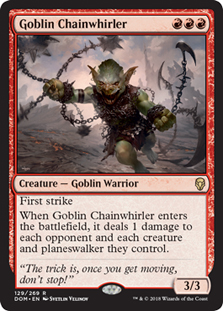
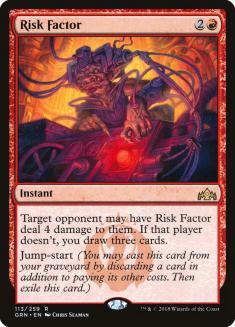
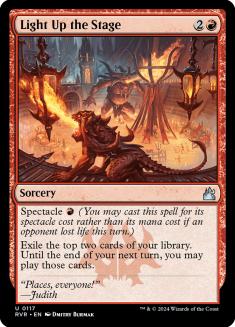

Goblin Chainwhirler and Risk Factor are the two big ones here; the deck
runs four copies of each and they’re the two most expensive cards in the
deck. When the two most expensive cards in your deck are $5 and $7,
respectively, there’s plenty of room for growth. Granted, Mono-Red Aggro
cards have historically remained less expensive than comparably successful
cards in other archetypes, but I wouldn’t be shocked if Risk Factor ends up
at $10-$15 at some point. Regardless, these two cards are going to remain
in demand for quite a while to come.
I usually don’t address uncommons in articles like this, but I wanted to
highlight Light up the Stage as a card that’s going to be expensive for
years. This card is no joke (I think it was on the latest episode of The
GAM Podcast where they called it the red Thoughtcast) and you’re going to
want to snag four of them sooner rather than later. Current retail is $3,
but I can see it hitting $5-$6 for a while depending on how much Ravnica Allegiance is opened. Also, you can probably get it
cheaper than that in trade since uncommons tend to be undervalued once the
binders are opened.
It’s also worth pointing out what isn’t in this deck; namely, more
than a single copy of Experimental Frenzy. While I still like that card in
a vacuum, it doesn’t seem like the current metagame is the right place for
it. I’d expect that one to start falling off a bit, though it might be a
good spec target at some point depending on how the red decks end up
adjusting to the next expansion.
Bant Nexus
Neither Mono-Red Aggro or Bant Nexus made it into the Top 8 in
Indianapolis, but that doesn’t mean that the decks aren’t essential parts
of the metagame going forward. Both decks are still clearly among the
format’s most intriguing and important strategies, and there’s one card in
particular that we need to talk a lot more about. More on that a little
later.
Creatures (1)
Planeswalkers (3)
Lands (24)
Spells (32)
- 1 Anticipate
- 3 Settle the Wreckage
- 3 Search for Azcanta
- 4 Revitalize
- 4 Nexus of Fate
- 4 Root Snare
- 4 Chemister's Insight
- 1 Dawn of Hope
- 4 Growth Spiral
- 4 Wilderness Reclamation
Sideboard

Key Financial Cards:


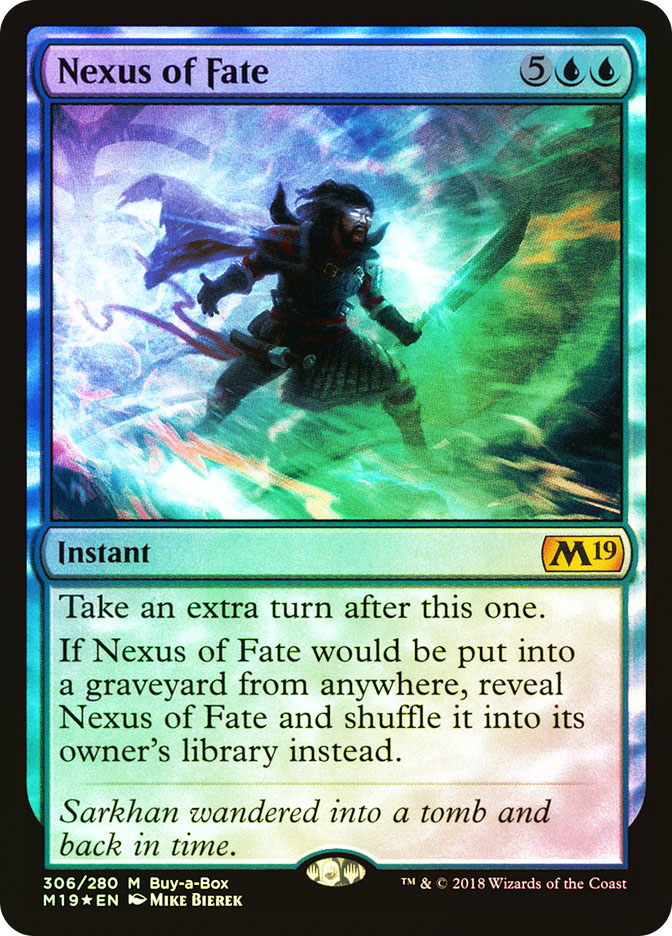
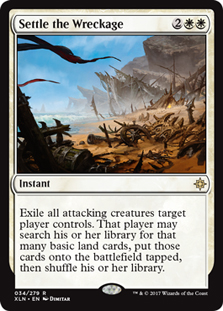

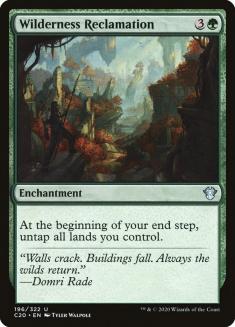

I could keep going. Bant Nexus is the most expensive deck in Standard right
now, starting with 3-4 copies of Teferi as well as a full four copies of
the $30 Nexus of Fate. And we haven’t even gotten to the Hydroid Krasises
(which may or may not actually belong in the best version of the deck) and
the pricey three-color manabase!
This is a big part of why I’m a little more gun-shy about Nexus of Fate’s
future value right now than I feel like I should be. The fact that it’s
sold out at $30 right now and has been climbing on MTGO tells one story,
but can a single second-tier Standard deck really sustain this many pricey
cards? I’m not so sure.
That said, I’m still very high on Wilderness Reclamation. The card may not
have made it to the top of the week one heap, and I don’t think that it’s
going to get emergency banned like some people were saying before #SCGINDY,
but it is one of the most powerful cards in Standard, full stop, and I’ll
be shocked if it doesn’t end up in at least one tier 1 deck during its time
in the format. At just $2, I put it in the same tier as Light up the Stage
– get your copies now, because this is going to be a $5+ uncommon at some
point.
Wilderness Reclamation is also part of why I’m not as down on Settle the
Wreckage as I would be otherwise. The fact that Kaya’s Wrath is so much
better in Esper Control shouldn’t matter nearly as much if Wilderness
Reclamation is going to be running around the top tables, because Settle
the Wreckage is the perfect card to hold up with all your mana open. Or,
heck, just leave the Reclamations at home and run something like
the Johnathan Hobbs Bant Flash list
. The fact that you can represent Angel of Grace, Frilled Mystic, Settle
the Wreckage, and a half-dozen other cards with your mana open is
unbelievable, and this is one of the directions that I suspect the metagame
is heading toward right now.
Four-Color Gates
I didn’t talk about Four-Color Gates very much last week because it had a
moderately disappointing showing at #SCGINDY. Again, I think this is a
result of small sample size, as well as the fact that we likely haven’t
found the optimal brew yet. Both of those things are going to change.
Creatures (11)
Lands (27)
Spells (22)

I have no idea if this build is right. I like it a little more than the
Nexus of Gates version, but I’m still not sure if either is particularly
optimized. What I do know is that cards like Gatebreaker Ram and Guild
Summit are absolutely worth running a bunch of terrible Gates for. And I
also know that silly decks like this tend to be more popular among the FNM
crowd than they are at events like Star City Games Opens, which means that
we could be seeing some nice financial gains.
Key Financial Cards:

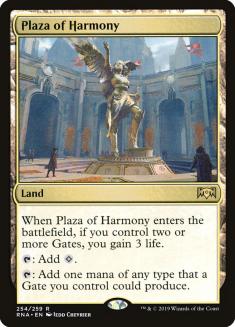
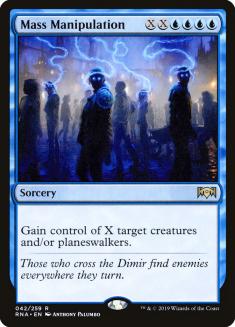

Yet again, we’re looking at four copies of Hydroid Krasis as the expensive
cornerstone for this deck. You can see why this card isn’t going to come
down in price anytime soon, right? The only other expensive cards here are
singleton copies of Breeding Pool in the maindeck and Carnage Tyrant in the
sideboard, both of which are somewhat replaceable. It’s kind of absurd that
we’ve got a four-color deck where the manabase is among the cheapest parts
of the deck, but that’s the beauty of Gates.
Plaza of Harmony and Mass Manipulation are both pretty clutch in this deck,
yet they’re both still available for bulk rare prices. This is where it’s
worth taking advantage of the fact that people (like me) dunked all over
these cards during preview season. Yeah, most of us figured that Gates
would be a Limited-only strategy and Mass Manipulation was just some silly
Commander only thirteen-drop winmore. We were wrong. While neither of these
cards is probably going to break out and end up being super expensive,
they’re both essential role-players in an otherwise cheap strategy. Get
your copies now before people start to figure that out.
Azorius Aggro
If anything, Azorius Aggro has only gone up in my estimation since last
weekend. It’s become one of the most popular decks in the format on MTGO,
and I can see why. Remember: it wasn’t that long ago when History of
Benalia was dominating Pro Tour Guilds of Ravnica, and there’s
nothing in this metagame that has blanked that card’s sheer power level.
Creatures (29)
- 4 Snubhorn Sentry
- 4 Benalish Marshal
- 4 Dauntless Bodyguard
- 1 Healer's Hawk
- 4 Venerated Loxodon
- 4 Hunted Witness
- 4 Tithe Taker
- 4 Deputy of Detention
Lands (21)
Spells (10)
Sideboard

Small white creatures are still pretty good, y’all. This deck runs about a
zillion one-drops, but it’s the addition of cards like Deputy of Detention
and Unbreakable Formation that have really pushed it over the top.
Key Financial Cards:
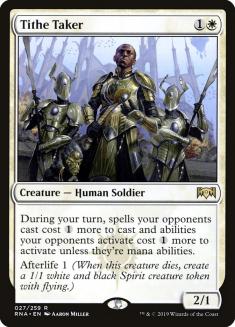
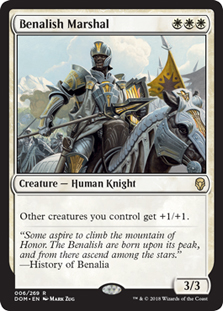
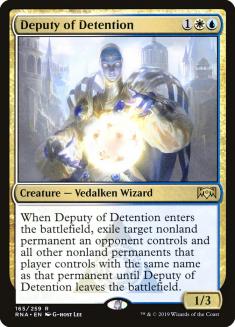

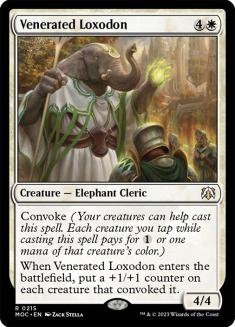
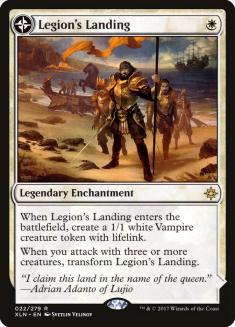
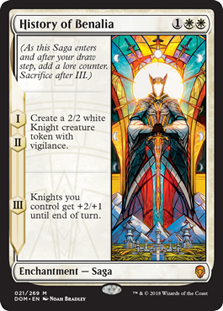
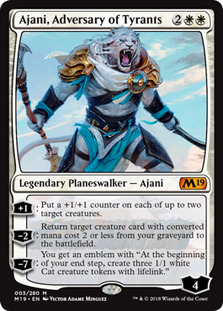

Azorius Aggro has quite a few rares in it, but none of them are all that
expensive right now. History of Benalia is the big one here, and that one’s
still just $18. We know what the upside looks like – History of Benalia hit
$30 for a hot minute after winning Pro Tour Guilds of Ravnica –
and this card has been slowly dropping in price ever since. At the very
least, the success of Azorius Aggro should reverse that trend.
I called Deputy of Detention a must-buy in last week’s article, and I stand
by that assessment. The Vedalken Wizard is a crucial four-of in Azorius
Aggro as well as Esper Midrange, two very different decks, and I feel like
Deputy of Detention is both good and versatile enough to see play in almost
any metagame where it’s castable. $4 feels like it’s on the low end of
where this card will end up.
Ajani, Adversary of Tyrants is the other interesting card here. Ajani is
only a sideboard card in Azorius Aggro, but it’s a mythic rare from Core Set 2019, which means that it has plenty of room to gain
financial ground. Azorius Aggro will probably have to become a bigger
player in the metagame for that to happen, but it’s a card that I’m keeping
my eye on for sure.
Mono-Blue Aggro
Mono-Blue Aggro is another deck that I’m fairly high on right now despite
only getting as high as 45th place at SCG Indianapolis last weekend. This
has been treated as sort of a budget/gimmick deck for a while now, but the
addition of Pteramander is absolutely massive. And even though Mono-Blue
didn’t do great last weekend, Pteramander sure did.
Creatures (19)
- 4 Siren Stormtamer
- 2 Mist-Cloaked Herald
- 4 Merfolk Trickster
- 4 Tempest Djinn
- 1 Exclusion Mage
- 4 Pteramander
Lands (19)
- 19 Island
Spells (22)
Sideboard

As much as Ravnica Allegiance might end up being known for Hydroid
Krasis, I suspect it’ll also be infamous for having so many top tier
uncommons. Pteramander is currently the cheapest of the elite at just
$1.25, and that’s an absolute steal. This card is going to be smashing
people for the next year and a half, and Modern play isn’t out of the
question, either. Get your copies now.
Key Financial Cards:
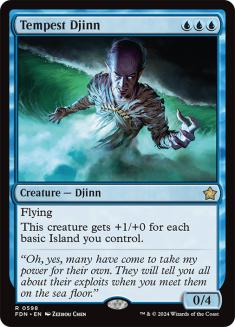
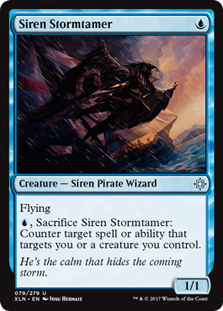
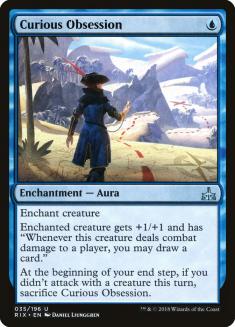

More uncommons! Siren Stormtamer and Curious Obsession spiked a few months
ago when this deck first burst onto the scene, but they both have more room
to grow if Mono-Blue Aggro really does become a strong second tier metagame
call like I think it will be. And there’s no way that Tempest Djinn should
be selling for $0.99 – it’s the only maindeck rare in a good Standard deck,
not bulk bin fodder.
Esper Midrange
Creatures (22)
- 2 Hostage Taker
- 2 Lyra Dawnbringer
- 3 Thief of Sanity
- 4 Deputy of Detention
- 3 Seraph of the Scales
- 4 Basilica Bell-Haunt
- 4 Hero of Precinct One
Planeswalkers (2)
Lands (24)
Spells (12)

This is another deck that was a bit of a surprise last weekend, though it’s
shown up enough on MTGO this week that I feel confident calling it one of
the more successful decks in the current format. I’m writing about it here
instead of the refined build of Izzet Drakes (featuring Pteramander)
because I’ve seen a heck of a lot more Esper Midrange kicking around
online.
Key Financial Cards:
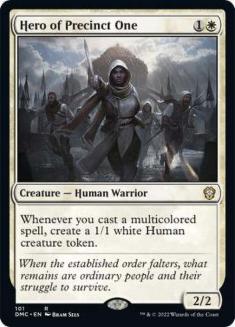

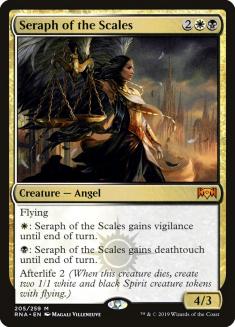
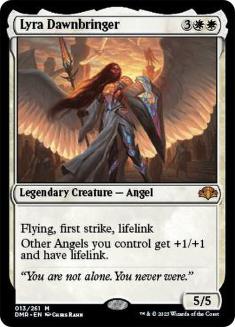

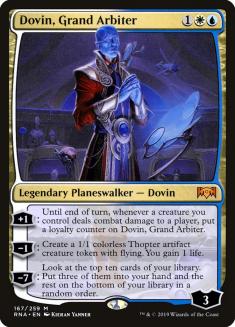
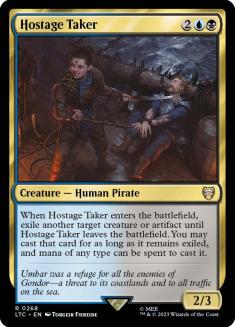
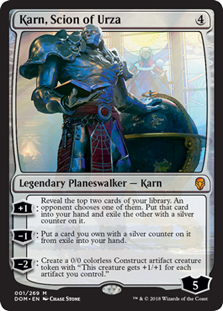

We’ve talked about Deputy of Detention already but let me reiterate here
how much I like the card right now. Ditto for Hostage Taker, which could
end up being a key piece of tech in three or four of the brews we’ve talked
about already today.
Lyra Dawnbringer is the most expensive card in the deck right now, but I
feel like it has a lot of the same issues as Carnage Tyrant at the moment.
It was quite good in the last iteration of Standard, but I feel like it’s a
bit too slow and clunky now. I wouldn’t be surprised if it ends up replaced
in this deck going forward. That said, Wyatt Darby himself wrote about the
deck here last week and he kept the Lyras in his maindeck going forward.
It’s going to depend a lot on whether the metagame shifts more toward
midrange/control or if aggressive strategies continue to develop.
Dovin, Grand Arbiter and Seraph of the Scales are the other really
interesting cards here. Both were already kind of expensive – promising new
mythics and planeswalkers are always kind of expensive – but the success of
Esper Midrange will keep them from dropping any further. Utility
planeswalkers rarely end up breaking $20, but there’s a little upside for
Dovin, Grand Arbiter at $10. $11 for Seraph of the Scales isn’t bad,
either, but she’ll probably need to show up in, say, the sideboard of Esper
Control or something to end up going up in price.
Key Standard Cards That Are Missing Right Now
We’ve talked a lot about the cards that are performing well right now, but
what of the no-shows? Here’s a partial list of the most expensive Standard
staples that aren’t really doing anything right now, coupled with a thought
or two on each:
-
Arclight Phoenix ($26) – Not even Izzet Drakes is playing Arclight
Phoenix at the moment. Modern demand should keep this card over
$15, but it’s got plenty of room to fall – and I expect that fall
to begin soon.
-
Rekindling Phoenix ($25) – This card is an absolute powerhouse in a
whole bunch of decks that just aren’t making the cut right now.
Gruul Aggro, Jund, Rakdos Aggro, etc. I respect the power level of
Rekindling Phoenix, and there’s a very real shot that this thing
surges back into the forefront of the metagame at some point, but
$25 is ridiculous for a card that doesn’t see play in either
Standard or Modern right now. Sell.
-
Nicol Bolas, the Ravager ($25) – Casual demand is the only thing
propping up Nicol Bolas’ price tag right now. Grixis Control isn’t
going to happen. Sell before this card ends up closer to $10 than
$20.
-
Elenda, the Dusk Rose ($16) – I know, I know, I want Mardu
Aristocrats featuring Judith, the Scourge Diva, too. Maybe it’ll
happen, but I haven’t seen any evidence yet. This card jumped from
$6 to $16 during Ravnica Allegiance preview season, so we
know what the floor is here. If you’re gold to hold, you have to be
comfortable with that floor being the realistic end point here.
-
Assassin’s Trophy ($16) – Between its Eternal applications and the
occasional appearance in Sultai Midrange, Assassin’s Trophy is
probably going to remain above $10. I’m still a little surprised
that this card hasn’t made more of an impact, though.
-
Resplendent Angel ($15) – The days of Boros Angels are over, and
even Aurelia herself is down to just $5. There are aggressive,
midrange, and control decks in this format that are all based at
least partially in white, and none of them run Resplendent Angel.
No way should this card still be $15.
-
Prime Speaker Vannifar ($15) – I’m writing this before #SCGBALT,
where Prime Speaker Vannifar could make her first main-stage debut
in Modern. This is a strong buy until we get more results. If
Vannifar has a good weekend in Baltimore, we could be looking at a
$30+ card simply due to how much demand there’s going to be from
Birthing Pod fans. If not, I’ll look to buy in again below $10.
-
Doom Whisperer ($14) – I really loved Doom Whisperer when Guilds of Ravnica was first previewed. It’s never done
anything, though, and I’m baffled as to why it’s still $14. I
suspect it’ll start to drop again soon.
-
Spawn of Mayhem ($13) – Everything I just wrote about Doom
Whisperer could apply here as well, only more so. We’ll revisit
this if Rakdos Aggro ever takes off, but this card might get really
cheap in the meantime.
-
Angrath, the Flame-Chained ($13) – Angrath seems pretty
well-positioned right now despite not having a deck. That minus-3
sure does look like a good way to counter an opposing Hydroid
Krasis! I’m a higher on Angrath than most of the cards on this
list, but it’ll need to find a home.
-
Domri, Chaos Bringer ($12) – The Gruul Aggro decks I’ve seen aren’t
even running Domri. Get out now.
-
Skarrgan Hellkite ($10) – None of the midrange red cards have a
place in the metagame right now; that’s why we’ve examined both of
the Phoenixes on this list already. We can re-visit Skarrgan
Hellkite if/when there’s room for a deck like that.
-
Growth-Chamber Guardian ($8) – Growth-Chamber Guardian and its pal
Incubation Druid looked like they were going to light the new
format on fire, only they didn’t show up much at #SCGINDY except in
Bant Midrange and a few of the more interesting builds of Sultai
Midrange. I still really like them, but at the moment it seems like
Merfolk Branchwalker and friends are still the right call in most
of the green-based creature decks. I still feel like Growth-Chamber
Guardian is going to be a part of this metagame at some point, but
right now my gut tells me to sell.
-
Vraska, Golgari Queen ($6) – I’m only bringing up Vraska here
because she falls into the same camp as Angrath in terms of being a
really solid answer to Hydroid Krasis. The Golgari Midrange decks
ran Vraska back when they first debuted in October, and the Sultai
Midrange decks might start taking a look at her again soon. For $6,
I’m intrigued.
This Week’s Trends
I’ve had more than a few people come to me expressing anxiety about the
long-term value of their collections due to concerns about WotC’s current
approach to organized play. While I’m certainly not a fan of the freelancer
layoffs, cut coverage, and poor communication, things haven’t gotten to the
point where I’m worried yet. The new system is isn’t working yet, but the
old system was also broken – as we remember from Gerry Thompson’s World
Championship boycott only four months ago.
(2/2) For New Jersey forward, we’ll be posting critical
end-of-tournament information on Sunday evening instead of round-by-round
postings here and on our sites. Fans can still expect to see Top 8
decklists and tournament results on Sunday evenings—
Magic Pro Tour (@magicprotour) January
27, 2019
As I see it, the popularity of Arena is only going to help bring more
people into the paper game. FNMs are all doing well. Prereleases are doing
well. MagicFest New Jersey sold out. The SCG Tour only keeps improving in
quality and popularity. I don’t see the current competitive climate as the
precursor to some sort of Magic apocalypse, but as a painful (and somewhat
mishandled) shift toward a world where WotC uses Arena’s popularity and
accessibility as its star-making apparatus while de-emphasizing the paper
grind somewhat. Maybe this leads to a world where your collection is worth
a little less, maybe not. Most Vintage, Old School, Legacy, and even a lot
of the Modern events weren’t Grand Prix or Pro Tours anyway, to say nothing
of casual play. And I wouldn’t be shocked if the influx of new players who
want to get into formats like Legacy and Modern end up replacing some of
that lost value regardless. Change is scary – I get that. Things can go
wrong. But financially, things seem pretty clear cut to me. Magic is
successful. Paper Magic is successful. And where there’s demand, supply
will rise up to meet it.
Moving on, it was another relatively quiet week in the Modern market. With
no major Modern events or Masters sets on the horizon, it’ll be interesting
to see when the eyes of the community turn toward Modern. This is one thing
that may lead to a short-term dip in your collection value: with WotC so
all-in on Arena, will there be an “everybody think about Modern” season
like we’ve enjoyed in past years? Right now, it’s too early to say.
Regardless, we saw Woodland Bellower and Craterhoof Behemoth spike in price
this week, likely on the back of some slightly off-kilter Prime Speaker
Vannifar speculation. Personally, I doubt that either of these two cards
will end up in a Vannifar chain, but the market has spoken. At the very
least, I’d be selling my Bellowers into the hype; Craterhoof Behemoth is a
great Commander card, at least, while Woodland Bellower is merely okay.
The Commander market is a tad more robust at the moment. Marble Titan,
Massacre Wurm, Hallowed Spiritkeeper, Athreos, God of Passage, Thrumming
Stone, and Sen Triplets were all up this week thanks to Ravnica Allegiance‘s impact on the metagame. Massacre Wurm,
Hallowed Spiritkeeper, and Athreos are great in Teysa Karlov decks, while
Sen Triplets plays well with the new Azorius and Orzhov cards. Thrumming
Stone is obviously a Persistent Petitioners spike.
As for Marble Titan…I don’t really know. It sees some play in Arcades, the
Strategist decks, but I feel like this was more of an artificial buyout.
There are still quite a few copies on the European market, and I wouldn’t
be shocked if it ends up back in the $4-$5 range instead of at $8, where
it’s at right now.
Lastly, it looks like the second (and likely final) wave of Ultimate Masters product has finally arrived. It was quite a small
wave, though most of the big box stores near me were re-stocked with at
least a few blister packs. Regardless, if this is all the Ultimate Masters that we’re getting, expect both boxes and singles
to begin rising in price at some point over the next couple of months.
While I’m a little bearish about the Modern index as a whole due to the
lack of market confidence at the moment, I still feel like Ultimate Masters staples are a solid buy right now.


